
Huawei Mate 20 Lite: The one big question
Huawei surprisingly announced the Mate 20 Lite at IFA and showed it in a guerrilla marketing campaign in the city. Here's a hands-on before the showcase at the trade fair.
The journalists at the IFA, including video producer Stephanie Tresch and myself, thought they knew what Huawei would be presenting at the press conference. "It'll probably be the same as last year, no," a journalist tells me in a broad Berlin dialect.
"Yes, no," I reply.
So goes the press conference. Kirin 980. sounds good, sounds strong, sounds next gen. P20 Pro gets a few new colours. Super. Fits. Phone of the year? Still a strong candidate.
But then: The Huawei Mate 20 Lite.
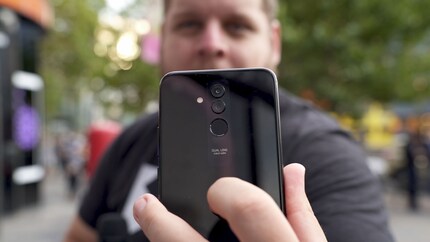
Source: Stephanie Tresch
Huawei spoils itself
Experts have been rumour-mongering for weeks about when Huawei will unveil this year's mates. The main question that has been buzzing around the insider circles shortly before the trade fair in Berlin: Will it be IFA? No, it won't. Or not quite.
Because the Huawei Mate 20 Lite is not even remotely competitive in terms of flagships. Nor does it want to be. Because the specs reveal who the phone is made for.
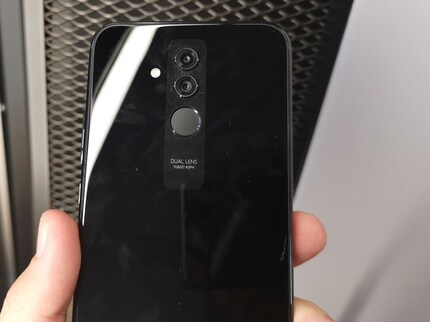
Source: Dominik Bärlocher
The Huawei Mate 20 Lite comes with 4GB of RAM, 64GB of internal storage and runs on a Kirin 710 system-on-a-chip (SoC). That alone doesn't sound impressive. Nor should it be. Because with the Lite series, Huawei generally wants to appeal to those who can't afford or don't want a flagship. So we can already say: The Mate 20 Lite is made for people who don't have deep pockets.
A look at the camera system fully reveals the target group. The Mate 20 Lite has a 20-megapixel lens at the rear, plus a second 2-megapixel lens. At the front, however, there is a single camera with a resolution of 24 megapixels. Selfies, that is. So then: selfies, no money... Is the Mate 20 Lite made for teenagers? Sure, I'm generalising wildly here, but that's usually how the big players in the industry think. If the selfie cam is strong, then the "selfie generation", i.e. teenagers, is the target group.
Zoom is bad, macro is good
Well, let's test the camera in front of Berlin's Europacenter.
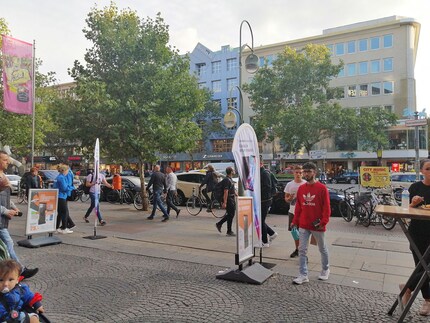
Source: Stephanie Tresch
It tears up the sky a bit, because it's definitely bluer in real life. The foreground, i.e. all the people, also looks quite good, but the fact that these are not Leica lenses is evident in the background. As soon as I zoom in over 100%, it becomes completely blurred.

Source: Stephanie Tresch
This is not very elegant, but not surprising. Other phones do exactly the same - including the new Sony XZ3 - and the images are perfectly adequate for social media. The camera performs particularly well when it recognises people in front of it using built-in artificial intelligence. Then even exhausted journalists look decent.

Source: Stephanie Tresch
On the front is the 24-megapixel camera, which delivers quite decent selfies, even when all beauty filters and other AI enhancements are deactivated. Selfie minister and connoisseur Stephanie immediately recognises the picture: Again, the picture is nothing to zoom in on. The images are definitely social media-compatible.
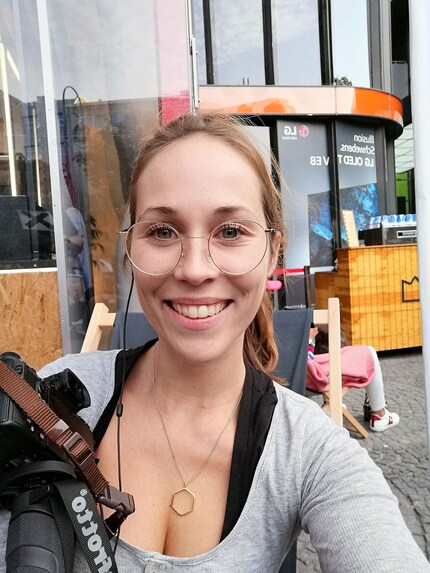
Source: Stephanie Tresch
On the video page, however, the full-time video producer draws a worse conclusion: the videos are extremely grainy, especially when you consider that the video is shot in broad daylight. "Dominik is greyed out and the background is extremely oversaturated. It's particularly noticeable in the hair," she says. Dominik's side note: Never look at individual frames from a video.
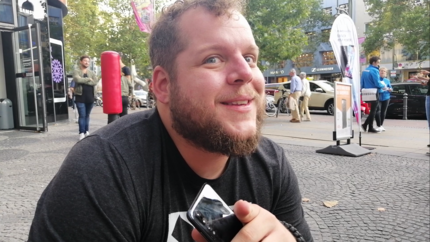
Source: Stephanie Tresch
It looks as if the camera overlays a kind of S-Log - a colour profile with which the camera records - over the footage. But the S-Log is not well thought out and so the shot looks "approved for average users".
The camera goes from bad to weird when I turn the aperture all the way up. It goes down to f/0.95, which the Leica-equipped P20 Pro can also do. But the result from the Mate 20 Lite is just weird.
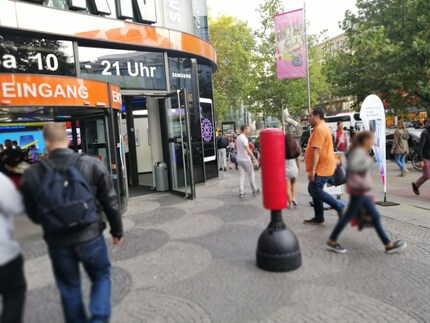
Source: Dominik Bärlocher
The photo is blurred with randomly distributed artificial blurring. The young woman in the foreground is completely out of focus, although the ground beneath her is in sharp focus. But the man behind her is sharp down to his feet. The trees are sometimes sharp, sometimes not, as are the spaces between the leaves.
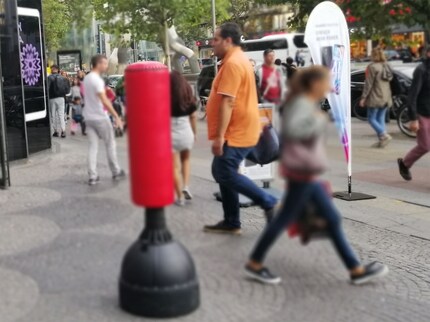

However, the camera has its good points. When it comes to macro shots, it does a great job. The microphone - our trusty Sennheiser MD46 - on her lap looks exactly like it does in real life. Black, shiny, slightly battered.
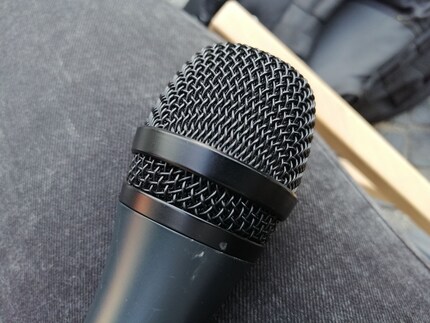
Source: Stephanie Tresch
stands out when it comes to macro.
We would have liked to test how the camera performs in the dark, but we don't have that long. Videos have to be edited and texts written.
The question of "why?"
In the end, one question remains: Why would anyone buy the phone? Sure, there are emergencies. Your mobile is broken and you need a new one right now? Go for the Honor Play. It does more for 50 francs less.

In contrast, the Mate 20 Lite is expensive and offers a lot of half-baked features.
In addition to the price issue, there is also the question of the timing of the release. Why is Huawei launching the Mate 20 Lite on the market? Now, about a month before its big sister, the Mate 20 - possibly with "Pro" as a suffix - is released? Who buys a phone that will be launched by itself in just over four weeks?
Journalist. Author. Hacker. A storyteller searching for boundaries, secrets and taboos – putting the world to paper. Not because I can but because I can’t not.
